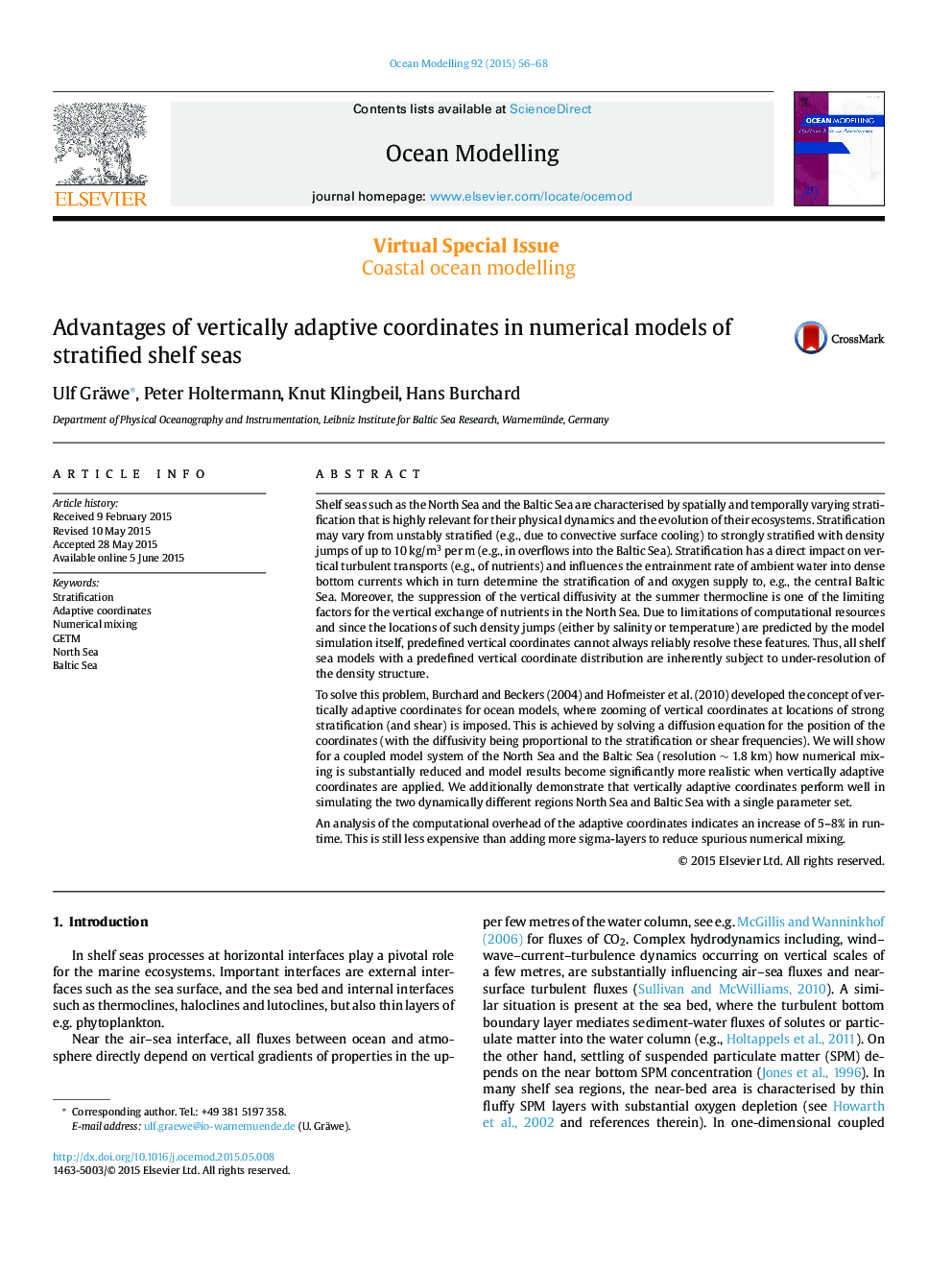| Article ID | Journal | Published Year | Pages | File Type |
|---|---|---|---|---|
| 6388093 | Ocean Modelling | 2015 | 13 Pages |
â¢Twin experiment for the coupled system North Sea/Baltic Seas.â¢Comparison of s-coordinates and vertically adaptive coordinates.â¢Adaptive coordinates show a better representation of the summer thermoclines.â¢Adaptive coordinates show lower numerical mixing compared to s-coordinates.
Shelf seas such as the North Sea and the Baltic Sea are characterised by spatially and temporally varying stratification that is highly relevant for their physical dynamics and the evolution of their ecosystems. Stratification may vary from unstably stratified (e.g., due to convective surface cooling) to strongly stratified with density jumps of up to 10 kg/m3 per m (e.g., in overflows into the Baltic Sea). Stratification has a direct impact on vertical turbulent transports (e.g., of nutrients) and influences the entrainment rate of ambient water into dense bottom currents which in turn determine the stratification of and oxygen supply to, e.g., the central Baltic Sea. Moreover, the suppression of the vertical diffusivity at the summer thermocline is one of the limiting factors for the vertical exchange of nutrients in the North Sea. Due to limitations of computational resources and since the locations of such density jumps (either by salinity or temperature) are predicted by the model simulation itself, predefined vertical coordinates cannot always reliably resolve these features. Thus, all shelf sea models with a predefined vertical coordinate distribution are inherently subject to under-resolution of the density structure.To solve this problem, Burchard and Beckers (2004) and Hofmeister et al. (2010) developed the concept of vertically adaptive coordinates for ocean models, where zooming of vertical coordinates at locations of strong stratification (and shear) is imposed. This is achieved by solving a diffusion equation for the position of the coordinates (with the diffusivity being proportional to the stratification or shear frequencies). We will show for a coupled model system of the North Sea and the Baltic Sea (resolution ⼠1.8 km) how numerical mixing is substantially reduced and model results become significantly more realistic when vertically adaptive coordinates are applied. We additionally demonstrate that vertically adaptive coordinates perform well in simulating the two dynamically different regions North Sea and Baltic Sea with a single parameter set.An analysis of the computational overhead of the adaptive coordinates indicates an increase of 5-8% in runtime. This is still less expensive than adding more sigma-layers to reduce spurious numerical mixing.
